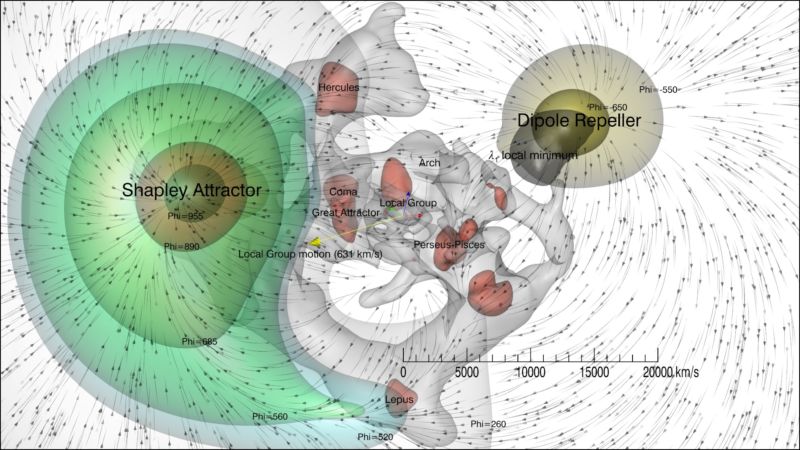Milky Way is not only being pulled—it’s also “pushed” by a void
Ars Technica » Scientific Method 2017-02-03

Enlarge / Labeled 3D model. The little arrows are galaxies, and the lines coming from them depicts their velocities (with the influence of the Universe's expansion on their velocities removed). Our galaxy, the Milky Way, is located in the Local Group, near the center of the image. The motions of all the galaxies seen here are dominated by the Shapley Attractor and the Dipole Repeller. (credit: Hebrew University of Jerusalem)
You may not notice it, but our Milky Way galaxy is cruising along at 630 kilometers (~391 miles) per second. That speed is often attributed to the influence of a single gravitational source. But in a new study, a group of researchers has found that the motions of the Local Group—the cluster of galaxies that includes the Milky Way—are being driven by two primary sources: the previously known and incredibly massive Shapley Supercluster and a newly discovered repeller, which the researchers dub the Dipole Repeller.
Shapley’s contribution was already known, but the Dipole Repeller’s hadn't been recognized prior to this study.
The researchers plotted the motions of many galaxies in the nearby Universe in a 3D model, using data from the Cosmicflows-2 database. Since the Universe is expanding, most galaxies are moving away from ours, creating a red-shift in the light they emit. But since the researchers were more interested in the other influences on a galaxy’s motion, they simply subtracted the expansion’s contribution. The resulting plot shows what the motions of galaxies would look like if space wasn’t expanding.